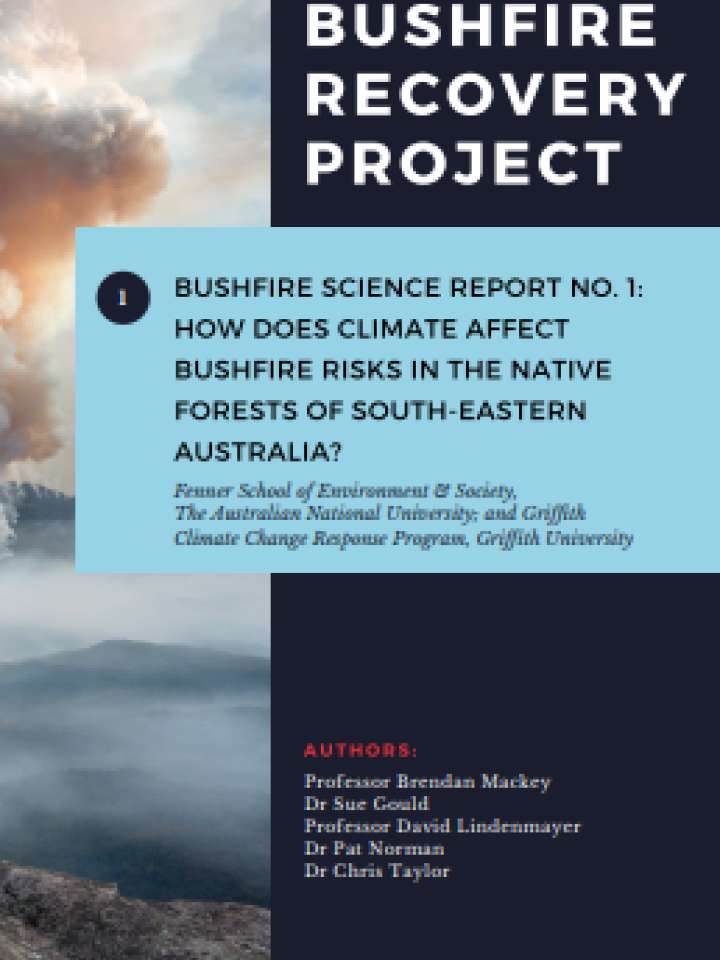Bushfire science information report 1: How does climate affect bushfire risks in the native forests of south-eastern Australia?
This report is one of a series of Bushfire Science Reports prepared by the Bushfire Recovery Project. The reports aim to present the latest evidence from the peer-reviewed scientific literature about bushfires, climate change and the native forests of southern and eastern Australia.
Key findings:
- The 2019-2020 spring and summer bushfires in eastern and south-eastern Australia were unprecedented in terms of their geographic location, spatial extent, severity and the forest types burnt. They were driven by extreme weather conditions including winter drought and high spring and summer temperatures.
- Drought is linked to fire risk through fuel dryness which is a key constraint on the occurrence of large bushfires in the region, resulting in low fuel moisture content, triggering leaf senescence and shedding in eucalypt forests, an increase in surface fine fuels, and as well as resulting in normally damp gullies and rainforest patches being unable to impede fire spread across the landscape.
- The world is already experiencing 1°C of global warming above pre-industrial levels. This is associated with an increase in the frequency and severity of dangerous bushfire conditions in Australia, particularly in southern and eastern Australia over the last 50 years, including a lengthening of the fire season.
- Projected climate change will further increase dangerous fire weather danger over most of Australia and particularly in south-eastern Australia, with longer and more severe fire seasons, more days of high, very high and extreme fire danger, more area burned, and increased fire control difficulty. Mega-fires present a new category of hazard that demands a new approach to bushfire risk management in Australia.
Explore further
